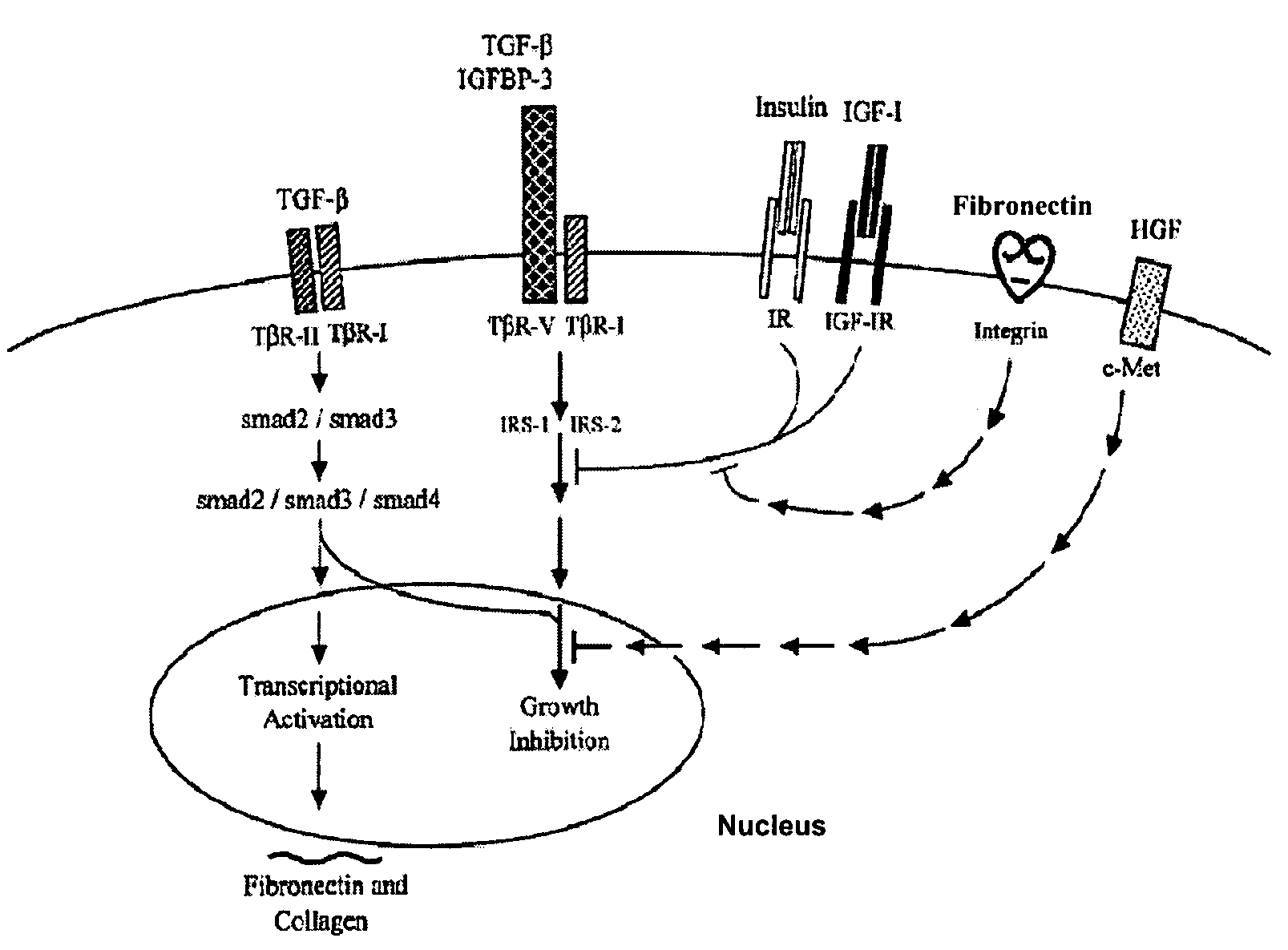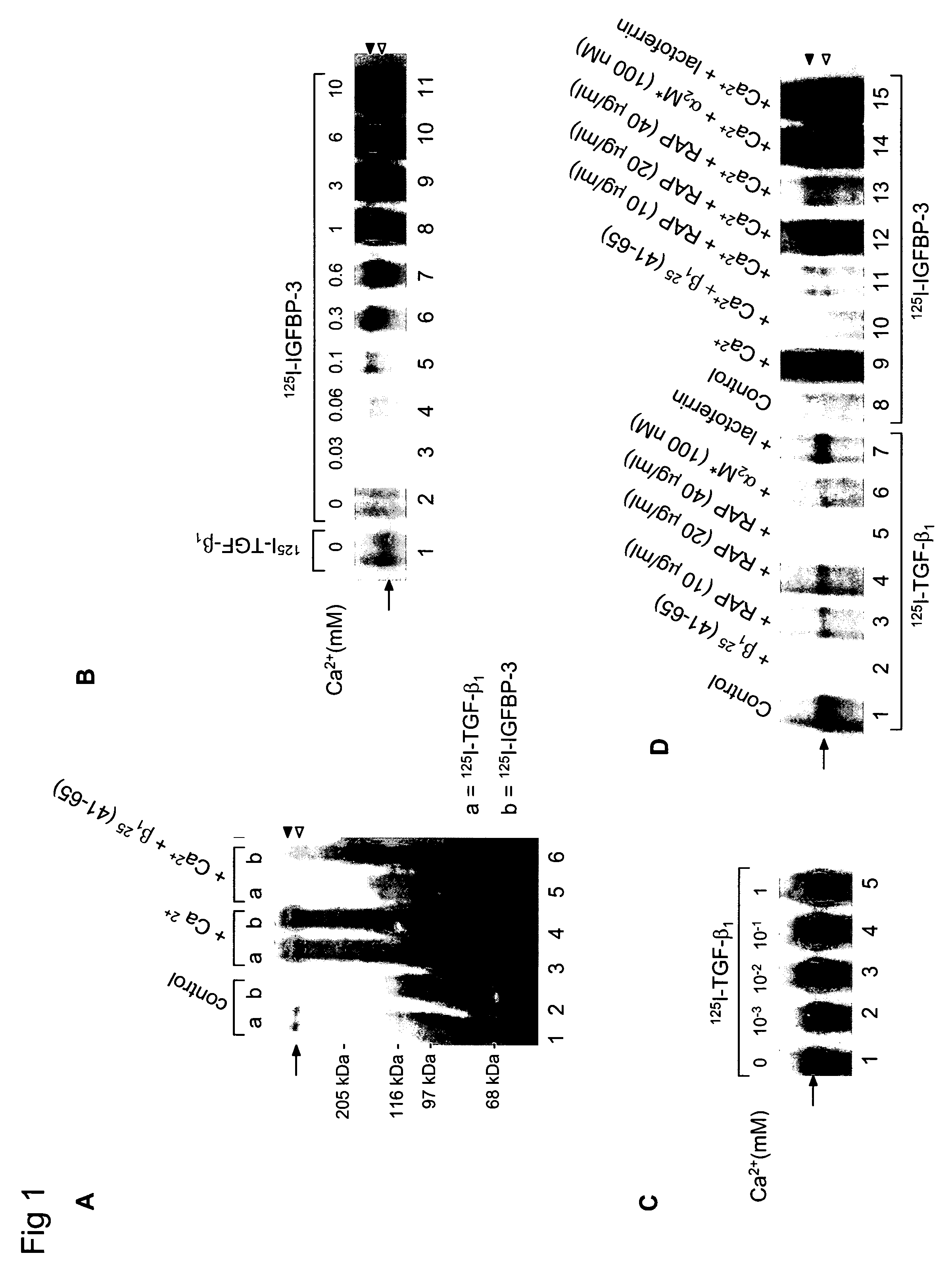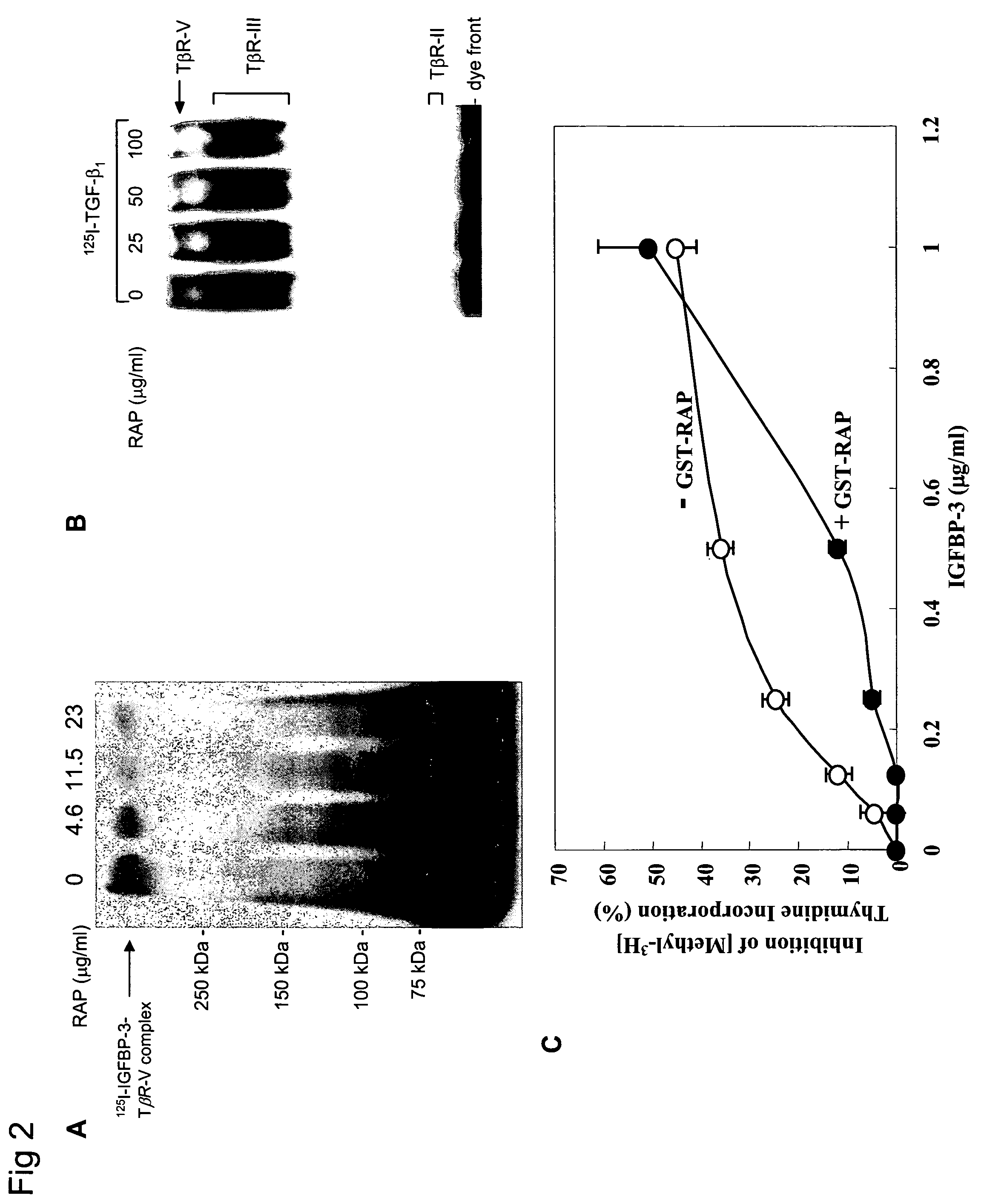Compositions and methods for inhibiting cell proliferation
- Summary
- Abstract
- Description
- Claims
- Application Information
AI Technical Summary
Benefits of technology
Problems solved by technology
Method used
Image
Examples
example 1
[0241]Cellular Growth Inhibition by IGFBP-3 and TGF-β1 Requires LRP.
Summary
[0242]The type V TGF-β receptor (TβR-V), which proved to be identical to the IGFBP-3 receptor, mediates the IGF-independent growth inhibition induced by IGFBP-3. Many human carcinoma cells lack or express very low levels of TβR-V. Growth of these cells is not inhibited by TGF-β1 or IGFBP-3, suggesting that TβR-V may play a role in the malignant phenotype of these cells. It is herein demonstrated that TβR-V is actually identical to the low-density lipoprotein receptor-related protein (LRP) as shown by MALDI-TOF analysis of tryptic peptides of TβR-V purified from bovine liver. In addition, 125I-IGFBP-3-affinity labeled TβR-V in mink lung epithelial cells (Mv1Lu cells) is immunoprecipitated by antibodies to LRP and TβR-V. The receptor-associated protein (RAP), an LRP antagonist, inhibits binding of 125I-TGF-β1 and 125I-IGFBP-3 to TβR-V and diminishes IGFBP-3-induced growth inhibition in Mv1Lu cells. Mutagenized ...
example 2
[0280]Insulin Receptor Substrate (IRS) Proteins are Important for Cellular Growth Inhibition by IGFBP-3 and TGF-β1.
Summary
[0281]Four lines of evidence are presented, which suggest that insulin receptor substrate proteins (IRS-1 and IRS-2) are important molecules for growth inhibition mediated by IGFBP-3 and TGF-β1. The evidence includes: 1) Insulin and (Q3A4Y15L16) IGF-I block growth inhibition by either IGFBP-3 or TGF-β1 (in the presence of a cyclic RGD peptide) in Mv1Lu cells. 2) IGFBP-3 induces serine-specific dephosphorylation of IRS-1 and IRS-2 in Mv1Lu cells and such dephosphorylation correlates with growth inhibition due to IGFBP-3 in Mv1Lu cells and mutant cells derived from the Mv1Lu cell line. 3) Both insulin and (Q3A4Y15L16) IGF-I block IGFBP-3-induced serine-specific dephosphorylation of IRS-2 in Mv1Lu cells. 4) Stable transfection of 32D myeloid cells (which lack endogenous IRS proteins and are insensitive to the growth inhibitory effects of IGFBP-3 and TGF-β1) with IRS...
example 3
[0310]Overexpression of LRP-1 minireceptors containing individual domains (mLRP-I, mLRP-II, mLRP-III and mLRP-IV) diminishes the growth inhibitory response to TGF-β1 in CHO-K1 cells.
[0311]To further define the role of LRP-1 in the growth inhibitory response to TGF-β1 in CHO-K1 cells, we determined the effect of overexpression of LRP minireceptors containing individual domains. We hypothesized that LRP-1 not only binds TGF-β1 but also mediates signaling leading to the growth inhibitory response to TGF-β1 (in concert with other TGF-P receptor types). If this hypothesis is correct, the LRP-1 minireceptors containing individual domains have potential to function as dominant negative mutants if they are overexpressed in cells. To test this hypothesis, CHO-K1 cells were stably transfected with HA-tagged LRP-1 minireceptors I, II, III and IV cDNAs and vector only. The clones selected were named CHO-K1 / mLRP-I, CHO-K1 / mLRP-II, CHO-K1 / mLRP-III and CHO-K1 / mLRP-IV, respectively. These cells exp...
PUM
| Property | Measurement | Unit |
|---|---|---|
| concentrations | aaaaa | aaaaa |
| concentrations | aaaaa | aaaaa |
| concentrations | aaaaa | aaaaa |
Abstract
Description
Claims
Application Information
 Login to View More
Login to View More - R&D
- Intellectual Property
- Life Sciences
- Materials
- Tech Scout
- Unparalleled Data Quality
- Higher Quality Content
- 60% Fewer Hallucinations
Browse by: Latest US Patents, China's latest patents, Technical Efficacy Thesaurus, Application Domain, Technology Topic, Popular Technical Reports.
© 2025 PatSnap. All rights reserved.Legal|Privacy policy|Modern Slavery Act Transparency Statement|Sitemap|About US| Contact US: help@patsnap.com



